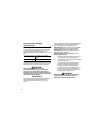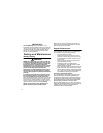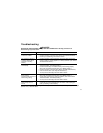
14
IMPORTANT!
Cat. 4120SB Only:
During installation, if you
accidentally press the Silence button, the alarm will
“chirp” once a minute for up to 15 minutes and the
Test feature will be temporarily disabled. This is
normal. The “chirping” will stop once the alarm
returns to normal operation.
Testing and Maintenance
Weekly Testing
WARNING!
NEVER use an open flame of any kind to test this unit.
You might accidentally damage or set fire to the unit or
to your home. The built-in test switch accurately tests
the unit’s operation as required by Underwriters
Laboratories, Inc. (UL). If you choose to use an aerosol
smoke product to test the smoke alarm, be certain to
use one that has been Listed to Underwriters
Laboratories, Inc. Safety Standards, and use it only as
directed. Use of non-UL Listed products or improper
use of UL Listed products may affect the smoke alarm’s
sensitivity
.
It is important to test this unit every week to make
sure it is working properly.
Using the test button is
the recommended way to test this smoke alarm.
Press and hold the test button on the cover of the unit until
the alarm sounds (the unit may continue to alarm for a few
seconds after you release the button). If it does not alarm,
make sure the unit is receiving power and test it again. If it
still does not alarm, replace it immediately.
During
testing, you will hear a loud, repeating horn
pattern: 3 beeps, pause, 3 beeps, pause.
When testing a series of interconnected units you
must test each unit individually. Make sure all units
alarm when each one is tested.
Regular Maintenance
This unit has been designed to be as maintenance-
free as possible, but there are a few simple things
you must do to keep it working properly:
• Test it at least once a week.
• Gently vacuum off any dust on the cover at
least once a month using your vacuum’s soft
brush attachment. Test the unit after vacuum-
ing the cover.
• Never use water, cleaners or solvents since
they may damage the unit.
• Relocate the unit if it sounds frequent
unwanted alarms. See “Where Not To Install
Smoke Alarms” for details.
• When the battery back-up becomes weak, the
smoke alarm will “chirp” about once a minute
(the low battery warning). This warning should
last 7 days, but you should replace the battery
immediately to continue your protection.
Choosing a replacement battery:
Your smoke alarm’s battery back-up requires one
standard 9V battery. The following batteries are
acceptable as replacements. This list supplements
the list on the smoke alarm battery door: Eveready
#216, #522 (Energizer), #1222; Duracell #MN1604,
MX1604 (Ultra); Gold Peak #1604P, #1604S;
Rayovac 1604, D1604. You may also use a Lithium
battery like the Ultralife U9VL-J for longer service life
between battery changes. These batteries are
available at many local retail stores.


















